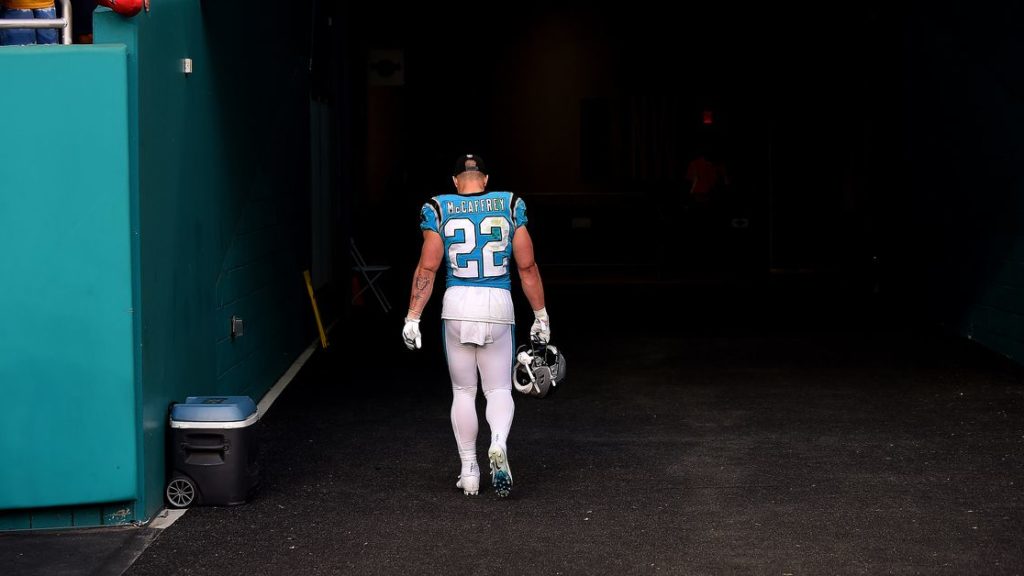A player whose dual-threat capability moves chains, and whose speed can break huge touchdowns seemingly out of nowhere.
On Monday the Carolina Panthers placed McCaffrey on injured reserve for the second time in 2021, this time ending his season.
I mention this to say we’re not playing revisionist history here, people were worried about sinking that much of the team’s salary cap into a position that has shifted completely away from the bellwether feature back, and sadly for Carolina, these fears were realized.
Ezekiel Elliott signed a six-year extension with the Cowboys in 2019, and he’ll barely clear 1,000 rushing yards this season if his pace stands.
It would be one thing if there wasn’t talent going around, if these were the only good running backs in the league.
The issue is how pronounced their salary to production is, compared to those on rookie deals.
The return on investment at running back is really, really bad — yet teams keep signing them to big deals.
It’s why their injury rate is high, their careers short, and that’s all assuming they haven’t been worn down in college before ever making it to the NFL.
So, what has happened to the modern running back? There’s definitely some truth in the idea that the NFL has made passing far easier to up scoring, and as a result it’s less important to grind it out on the ground.
The idea of the 30 carry modern running back putting an entire offense on their back has become similar to running an NBA offense through a statuesque big man who can’t shoot outside the paint.
In 2021, we’re on pace to have 13, with a handful more only a few big games away from reaching the mark as well — and that’s adjusting to a 16 game season like we’re accustomed to.
More passing, a shifting league, rookie running backs proving they can be as effective as the best veterans, and more injuries.
Regardless of production, no matter how difficult pulling off the BandAid might be for fans, re-signing a running back to a huge contract is wildly damaging for your franchise.
